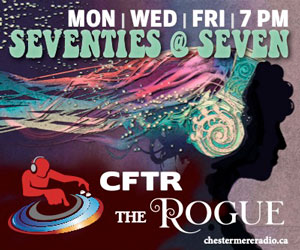After a long winter of lockdowns, summer is a time of garden parties, wedding dinners, graduations, and other special occasions that call for sparkling wines.
For casual boozers, the only sparkling wine the comes to mind is Champagne, and it is indeed the gold standard against which all others are judged.
However, Champagne no longer stands alone in the bubbly wine category, as the neighbouring countries of Italy and Spain both have their own sparkling wines.
Italy’s claim to fame in the world of bubbly wines is called Prosecco. The name of the grapes comes from the small Italian village of Prosecco, which is thought to be the origin of the varietal way back in the days of the Roman Empire, when Pliny the Elder waxed poetically about the virtues of this noble grape.
Today, Prosecco is usually a dry or extra-dry white sparkling wine, but this was not always the case. Back in the swinging sixties, those groovy Italian winemakers were making mostly sweet wines, and there was limited popularity in international markets.
That all changed at the turn of the millennium, when a more dry and refined Prosecco was introduced to the North American market, which experienced explosive growth and popularity. Today, it is easy to find Prosecco in any restaurant or liquor retailer.
Interestingly, the bubbles in Prosecco are not produced in the same manner as Champagne.
While Champagne uses the traditional method of creating CO2 bubbles through a secondary fermentation in the bottle, Prosecco uses the less expensive Charmat method, where the wine undergoes a secondary fermentation in giant stainless steel tanks, and is then bottled under pressure.
Since Prosecco does not undergo secondary fermentation in the bottle, it does not age as well as Champagne, so Prosecco should be enjoyed while it is still young, preferably within 3 years of bottling.
While Prosecco was traditionally made from the Prosecco grape, the powers that be decided to rename the Prosecco grape to Glera in 2009, with the decree that Prosecco would now refer only to the geographical designation, but not the grape itself.
Prosecco tends to be slightly lower in alcohol than other sparkling wines, making it popular for those family Thanksgiving dinners with that one boozy old aunt who has a few snootfulls and starts revealing skeletons in the family closet.
Most Prosecco weighs in around 11% ABV, while Champagne and Cava are just a wee bit higher at 12% ABV.
Moving over to Spain, the sparkling wine there is called Cava, and while usually a white wine, can also be a rosé.
Cava production is concentrated in the Catalonia region of northwestern Spain, and uses the same traditional methods as Champagne, creating CO2 bubbles through a secondary fermentation in the bottle.
While Champagne is usually made from Chardonnay grapes, Cava is primarily made from the Macabeu and Parellada grape varietals.
Similar to Champagne, Cava can be produced with varying levels of residual sugars making for wines ranging from the extra-dry Brut style, the regular-dry Seco style, all the way to the super-sweet Dulce style.
Cava production started in the 1860’s, basically as a copy of the Champagne method using locally available grapes, and has been consistently popular in Spanish culture, especially for celebrations of marriage or baptisms.
Consumer tastes tend to prefer the Brut and Seco styles, so these are the brands you will find most often on the shelves of your friendly neighbourhood liquor sellers.
Not wanting to be outdone, those industrious winemakers of Germany also produce a sparkling wine called Sekt, but it is almost exclusively for domestic consumption, so you will not see much of it here in Canada.
So, the next time you have a special event to celebrate, even if it’s just drinks on the patio with friends, kick your party up a notch by serving a sparkling wine.
Prosecco is the sparkling wine that is the media darling at the moment, but your humble narrator has always had a soft spot for Spanish wines, probably because the winemakers of Spain have a tendency to age their wines longer before releasing them, usually at the same price point as much younger French and Italian wines.
This makes Spanish wines an excellent value, so you can drink high quality wines without breaking the bank.
You will see plenty of Spanish Cava on the shelves of your local booze merchants, with Freixenet being the most popular. Give some a try today!






